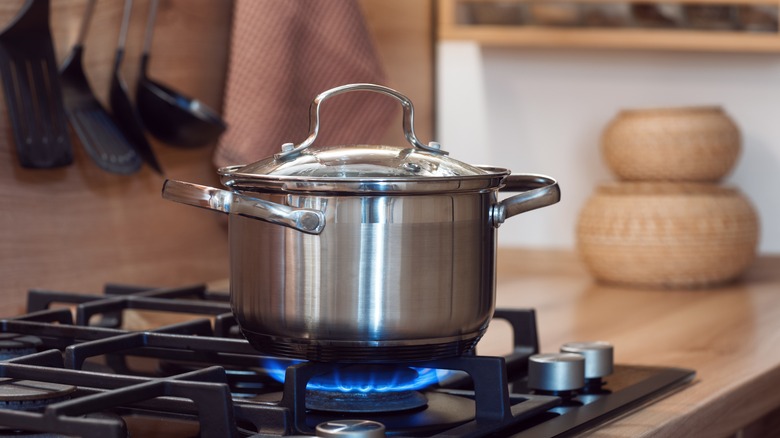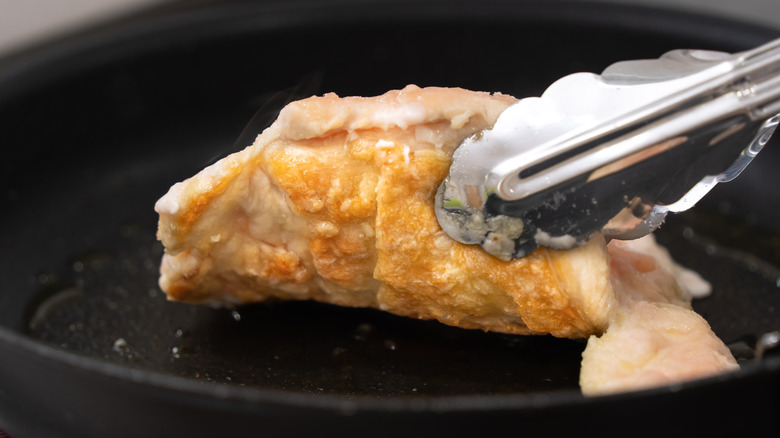Chicken and dumplings is the ultimate comfort food. With tender chicken, pillowy dumplings, and a rich, savory broth, it’s no wonder this hearty dish has been a staple for generations. However, getting the perfect thickness can be tricky. You want a broth that coats the dumplings but isn’t overly gloopy or watery.
Luckily there are several simple tricks to help you achieve the ideal thickness for your chicken and dumplings. In this comprehensive guide we’ll explore the science behind thickness, walk through thickening techniques, troubleshoot common issues, and answer frequently asked questions. Let’s dive in!
Understanding Chicken and Dumpling Thickness
The key to perfectly thickened chicken and dumplings lies in understanding the delicate balance between liquid and starch
The Role of Collagen
Simmering chicken on the bone releases collagen, naturally thickening the broth over time. Longer simmering means more thickness.
Starch from Dumplings
Flour or biscuit-based dumplings will release starch as they cook, contributing to the broth’s body. The more dumplings, the thicker it gets.
Evaporation During Cooking
As the broth simmers, water evaporates, concentrating flavors and textures. Reducing the liquid is an easy way to thicken without adding starch.
Thickening Agents for Chicken and Dumplings
When the natural thickening isn’t enough, you can add a starch slurry to achieve your perfect consistency.
Flour
The classic choice! Mix equal parts flour and cold water to form a slurry. Add slowly, whisking constantly to prevent lumps.
Cornstarch
A great gluten-free alternative to flour. Make a slurry with cold water and add near the end of cooking.
Arrowroot Powder
Another gluten-free option. Arrowroot produces a silky, glossy texture in the broth. Use like cornstarch.
Instant Mashed Potatoes
In a pinch, potato flakes can thicken the broth. Add slowly and adjust to desired consistency.
Heavy Cream
For extra richness, heavy cream thickens while adding flavor. Stir in at the end of cooking.
Troubleshooting Thickness in Chicken and Dumplings
If your chicken and dumplings turns out too thin or thick, these tips can help you get it just right:
Too Thin
- Simmer uncovered to reduce broth
- Add more dumplings
- Use a starch slurry (flour, cornstarch, arrowroot)
Too Thick
- Add more broth or water
- Use less starch-heavy dumplings
- Switch to boneless chicken pieces
Lumpy
- Strain through a mesh sieve
- Use a whisk to vigorously blend flour lumps
Frequently Asked Questions
How much slurry should I add?
Start with 1-2 tbsp of starch and 1-2 tbsp water. Add slowly and adjust as needed for desired thickness.
What’s the best thickener for chicken and dumplings?
Flour and cornstarch are most traditional. Arrowroot and cream add unique flavors. Choose based on diet and preference.
Can I use broth instead of water for the slurry?
Yes, substituting broth adds more flavor. But the slurry must still start with cold liquid to prevent lumps.
Should I thicken before or after adding dumplings?
After. Letting the dumplings cook and release starch naturally gives better texture.
My dumplings are mushy. How can I fix it?
Don’t overcrowd the pot. Add dumplings slowly, allowing time for them to puff up before adding more.
Can I make it thicker after serving?
Yes, mix a small slurry in a bowl first. Then stir it into the served chicken and dumplings to reach desired thickness.
Conclusion
Achieving the perfect broth for chicken and dumplings may take some trial and error based on your recipe and preferences. But understanding the science behind thickness and using starch slurries, reductions, and other tricks will set you up for success. With tender dumplings in creamy, savory broth, this hearty dish is sure to satisfy.
So grab your soup pot, put on some cozy socks, and get ready to enjoy chicken and dumplings at their very best. Just be prepared for the requests for second helpings!

Avoid checking on your dumplings

The sight of a gently bubbling pot of chicken and dumplings is pure comfort, but try to resist the temptation to check on it too much. The key to making perfect chicken and dumplings is to keep the lid firmly clamped on until your cooking time has elapsed. The dumplings cook from the steam released by the soup, and this makes them light and pillowy. Every time you open your pot, though, that steam escapes in one go, not only dropping the temperature of the mixture (and making it take longer to cook), but also causing your dumplings to become chewy instead of fluffy.
To ensure maximum steam coverage for your dumplings, make sure youre spreading them evenly around your pan, and that theyre not touching. You should also try not to use too deep of a pot, or have a thin broth with no additional ingredients in them. This can cause the dumplings to sink into the soup too much and will result in them boiling instead of steaming. If the pot you wish to use doesnt have a lid, you can create a makeshift one by using a heavy baking sheet or an upturned frying pan.
Fry your chicken instead of boiling it

Traditional chicken and dumplings are often made using boiled chicken breasts, which are then cubed up and dropped into the soup. Boiling the chicken breasts prevents you from having to use any additional oil to cook them, but it can also make the protein hard and almost inedible. If you boil chicken at a too-high heat, or keep it on the boil for too long, the proteins toughen up. This causes any moisture or fat in the meat to leach out, leaving you with tough chicken.
Rather than have this happen, you should aim to fry your chicken. Frying chicken and then leaving it to rest before cubing it up, allows the moisture to re-establish itself in the meat, giving you tender morsels. Frying the meat also develops flavor, thanks to the browning it gains on its exterior. Its also important not to boil your chicken once youve added it to the soup mixture, instead keeping it on a low simmer. This will not only stop the chicken from seizing up and getting tough but will also stop your dumplings from doing the same thing.
